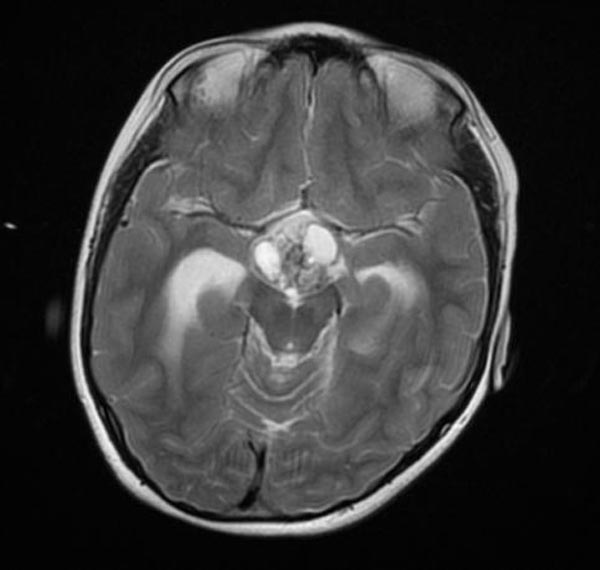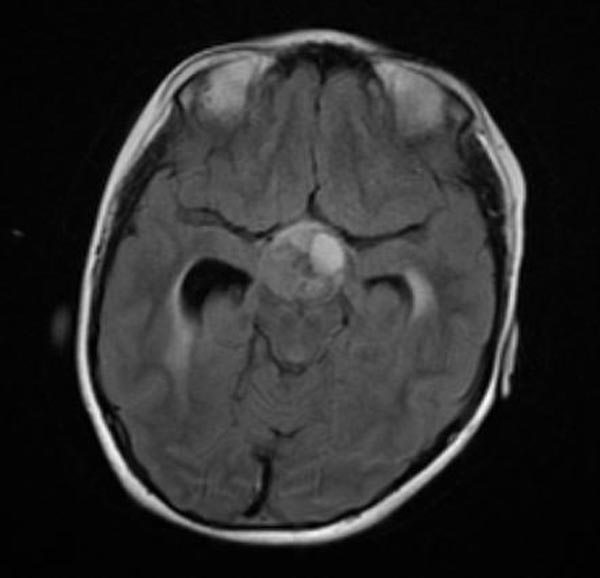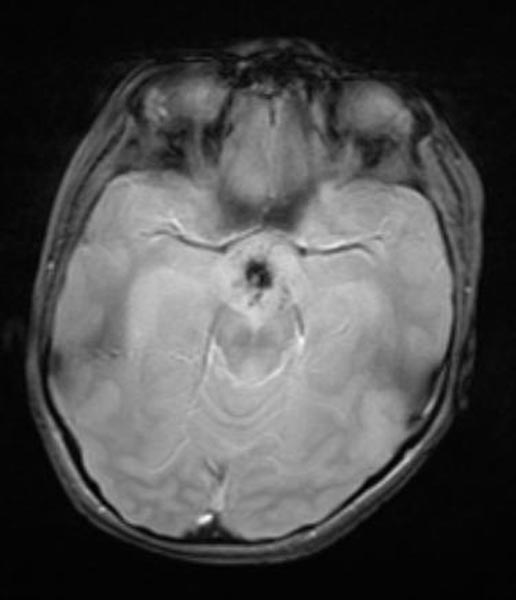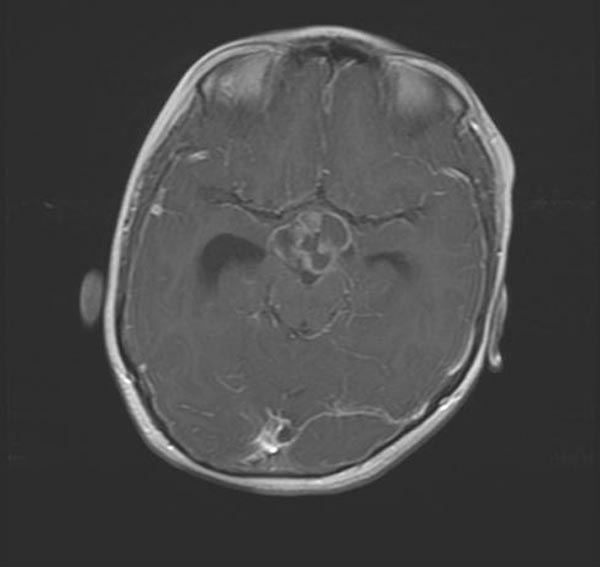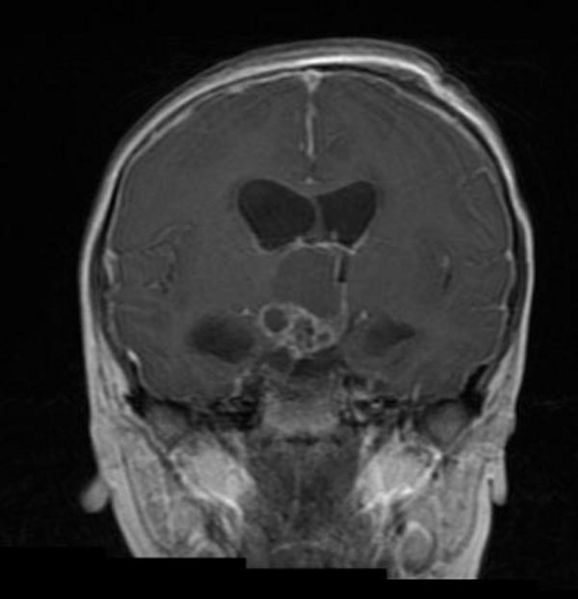Craniopharyngioma MRI: Difference between revisions
(→MRI) |
(→MRI) |
||
| Line 6: | Line 6: | ||
==MRI== | ==MRI== | ||
===Adamantinomatous=== | |||
The findings on the MRI are | |||
cysts: variable but ~80% are mostly or partly T2 hyperintense | |||
T1: iso- to hyperintense to brain (due to high protein content machinery oil cysts) | |||
solid component | |||
T1 C+ (Gd): vivid enhancement | |||
T2: variable or mixed | |||
calcification | |||
difficult to appreciate on conventional imaging | |||
susceptible sequences may better demonstrate calcification | |||
MR angiography: may demonstrate displacement of the A1 segment of theanterior cerebral artery (ACA) | |||
MR spectroscopy: cyst contents may show a broad lipid spectrum, with an otherwise flat baseline 6 | |||
([http://www.radswiki.net Images courtesy of RadsWiki]) | ([http://www.radswiki.net Images courtesy of RadsWiki]) | ||
Revision as of 00:49, 23 August 2015
|
Craniopharyngioma Microchapters |
|
Diagnosis |
|---|
|
Treatment |
|
Case Studies |
|
Craniopharyngioma MRI On the Web |
|
American Roentgen Ray Society Images of Craniopharyngioma MRI |
Editor-In-Chief: C. Michael Gibson, M.S., M.D. [1]
Overview
MRI
Adamantinomatous
The findings on the MRI are cysts: variable but ~80% are mostly or partly T2 hyperintense T1: iso- to hyperintense to brain (due to high protein content machinery oil cysts)
solid component T1 C+ (Gd): vivid enhancement T2: variable or mixed
calcification difficult to appreciate on conventional imaging susceptible sequences may better demonstrate calcification
MR angiography: may demonstrate displacement of the A1 segment of theanterior cerebral artery (ACA) MR spectroscopy: cyst contents may show a broad lipid spectrum, with an otherwise flat baseline 6 (Images courtesy of RadsWiki)
-
Craniopharyngioma
-
Craniopharyngioma
-
Craniopharyngioma
-
Craniopharyngioma
-
Craniopharyngioma
